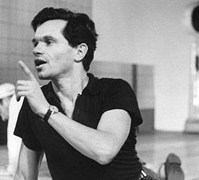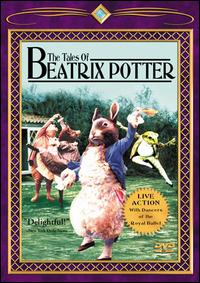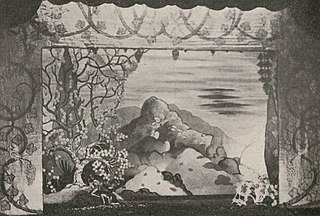Related Research Articles

The Rhapsody on a Theme of Paganini, Op. 43, is a concertante work written by Sergei Rachmaninoff for piano and orchestra, closely resembling a piano concerto, all in a single movement. Rachmaninoff wrote the work at his summer home, the Villa Senar in Switzerland, according to the score, from 3 July to 18 August 1934. Rachmaninoff himself, a noted performer of his own works, played the piano part at the piece's premiere on 7 November 1934, at the Lyric Opera House in Baltimore, Maryland, with the Philadelphia Orchestra conducted by Leopold Stokowski. Rachmaninoff, Stokowski, and the Philadelphia Orchestra made the first recording, on 24 December 1934, at RCA Victor's Trinity Church Studio in Camden, New Jersey. The English premiere on 7 March 1935 at Manchester Free Trade Hall also featured Rachmaninoff with The Hallé under Nikolai Malko.

Rudolf Khametovich Nureyev was a Soviet-born ballet dancer and choreographer. Nureyev is regarded by some as the greatest male ballet dancer of his generation.

Mikhail Nikolayevich Baryshnikov is a Soviet Latvian-born Russian-American dancer, choreographer, and actor. He was the preeminent male classical dancer of the 1970s and 1980s. He subsequently became a noted dance director.

Michael Kidd was an American film and stage choreographer, dancer and actor, whose career spanned five decades, and staged some of the leading Broadway and film musicals of the 1940s and 1950s. Kidd, strongly influenced by Charlie Chaplin and Léonide Massine, was an innovator in what came to be known as the "integrated musical", in which dance movements are integral to the plot.

The Tales of Beatrix Potter is a 1971 ballet film based on the children's stories of English author and illustrator Beatrix Potter. The film was directed by Reginald Mills, choreographed by Sir Frederick Ashton, and featured dancers from The Royal Ballet. The musical score was arranged by John Lanchbery from various sources, such as the operas of Michael Balfe and of Sir Arthur Sullivan, and performed by the Orchestra of the Royal Opera House. It was produced by Richard Goodwin with John Brabourne as executive producer. The stories were adapted by Goodwin and his wife designer Christine Edzard.

The Royal Ballet is an internationally renowned classical ballet company, based at the Royal Opera House in Covent Garden, London, England. The largest of the five major ballet companies in Great Britain, the Royal Ballet was founded in 1931 by Dame Ninette de Valois, it became the resident ballet company of the Royal Opera House in 1946 and was granted a royal charter in 1956, becoming recognised as Britain's flagship ballet company.

La Péri is a 1912 ballet in one act by French composer Paul Dukas, originally choreographed by Ivan Clustine and first performed in Paris, about Iskender searching for immortality and his encounter with a mythological Peri. It was premiered on April 22, 1912.

This version of the Cinderella ballet, using Sergei Prokofiev's Cinderella music and re-choreographed by Frederick Ashton, is a comic ballet.

Dame Gillian Barbara Lynne was an English ballerina, dancer, choreographer, actress, and theatre-television director, noted for her theatre choreography associated with two of the longest-running shows in Broadway history, Cats and The Phantom of the Opera. At age 87, she was made a DBE in the 2014 New Year Honours List.
Sir Anthony James Dowell is a retired British ballet dancer and a former artistic director of the Royal Ballet. He is widely recognized as one of the great danseurs nobles of the twentieth century.
Lawrence Pech is a dancer, choreographer and teacher currently living and working in the San Francisco Bay Area.
Dame Merle Park is a British ballet dancer and teacher, now retired. As a prima ballerina with the Royal Ballet during the 1960s and 1970s, she was known for "brilliance of execution and virtuoso technique" as well as for her ebullience and charm. Also admired for her dramatic abilities, she was praised as an actress who "textured her vivacity with emotional details."
Wayne Eagling is a Canadian ballet dancer, now retired. After more than twenty years as a popular member of The Royal Ballet in London, he became well known as an international choreographer and company director.
Other Dances is a ballet choreographed by Jerome Robbins to music by Frédéric Chopin. It was created on Natalia Makarova and Mikhail Baryshnikov, and premiered on May 9, 1976, at a gala benefitting the New York Public Library for the Performing Arts, held at Metropolitan Opera House. It was originally made as a pièce d'occasion, but after receiving critical acclaim, it was soon added to American Ballet Theatre and New York City Ballet's repertories.

Who Cares? is a ballet choreographed by George Balanchine to songs by George Gershwin that were orchestrated by Hershy Kay. The ballet is split in two parts, the first danced by an ensemble, and the second focuses on four principal dancers. Who Cares? premiered on February 5, 1970, at the New York State Theater, danced by the New York City Ballet.
Georgina Parkinson was an English ballet dancer and ballet mistress. She joined The Royal Ballet in 1957 and was promoted to principal dancer in 1962. Best known for dancing 20th-century works, she was a frequent collaborator of choreographer Kenneth MacMillan, and had also created roles for Frederick Ashton. In 1978, she accepted the invitation to become a ballet mistress at the American Ballet Theatre for a year, before assuming the position permanently in 1980. She also performed character roles with the American Ballet Theatre.

Pamela May OBE was a Trinidad-born British dancer and teacher of classical ballet. Most noted as one of the earliest members of The Royal Ballet, she was regarded as a versatile dancer; dancing all the established 19th-century classical repertoire, and creating roles in new ballets by Ninette de Valois and Frederick Ashton. After retiring from professional ballet, she became a teacher at the Royal Ballet School, and also served as vice-president of the Royal Academy of Dance.

Lesley Faye Collier is an English ballerina and teacher of dance. In 1972 she became a principal dancer of the Royal Ballet. In 1995 she left the company and she began to teach at the Royal Ballet School. She is a rèpetitor at the Royal Ballet.
Cynthia Harvey is an American former ballet dancer, ballet mistress and educator. She joined the American Ballet Theatre (ABT) in 1974 and was promoted to principal dancer in 1982. In 1986, she joined The Royal Ballet, becoming the company's first American principal dancer. She returned to ABT two years later, and retired in 1996. She then started teaching and staging ballets across the world. In 2016, she was named artistic director of the Jacqueline Kennedy Onassis School, the affiliated school of ABT. She will step down from the position in May 2022.
Leonid Mikhailovich Lavrovsky (1905–1967) was a Russian ballet choreographer, most famous for choreographing the first full version of Sergei Prokofiev's Romeo and Juliet.
References
- 1 2 3 4 5 6 7 8 9 "A dainty dance to set before a queen". The Guardian. 2 August 1980. ProQuest 186220767.
- 1 2 3 4 5 6 7 Anderson, Zoë (29 May 2015). The Ballet Lover's Companion. pp. 265–267. ISBN 9780300154290.
- 1 2 3 4 5 6 7 8 9 Kavanagh, Julie (1997). Secret Muses: The Life of Frederick Ashton. ISBN 978-0-679-44269-1.
- 1 2 3 4 5 6 7 8 9 10 11 Vaughan, David (1999). Frederick Ashton and His Ballets. ISBN 9781852730628.
- ↑ Mackrell, Judith (14 March 2005). "Royal Ballet mixed programme". The Guardian.
- ↑ Anderson, Zoë (21 January 2016). "The Royal Ballet's Rhapsody, Royal Opera House, theatre review: Virtuoso display marks return of Natalia Osipova". The Independent.
- ↑ Trbovich, Carolan (18 November 2018). "BWW Review: Masters of Dance at Sarasota Ballet". BroadwayWorld.
- ↑ Thornbury, Barbara E. (2013). America's Japan and Japan's Performing Arts: Cultural Mobility and Exchange in New York, 1952–2011. p. 151. ISBN 978-0472029280.
- ↑ Croce, Arlene (1982). Going to the Dance. pp. 303–308. ISBN 9780394524412.